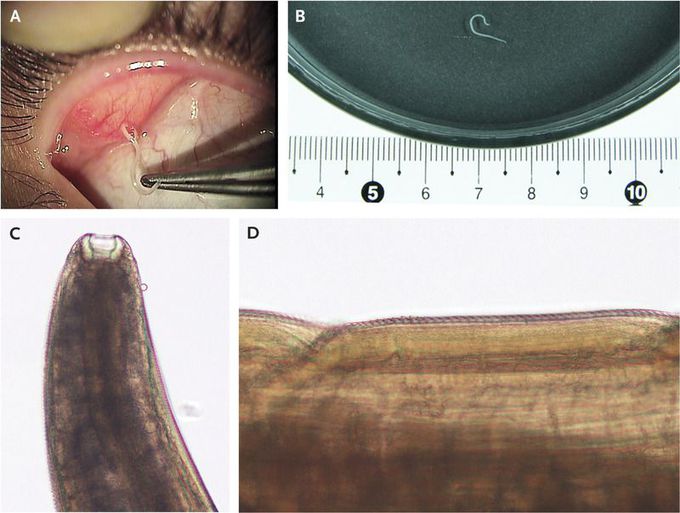


Worms in the Eye
A 21-year-old man presented with a 2-week history of itching in his left eye. He reported “seeing worms” in his eye. He underwent thorough irrigation of the conjunctival sac and lacrimal duct, during which three worms were removed (video and Panel A). The worms were white, slender, and filiform nematodes, 10 to 12 mm long and 0.16 to 0.18 mm wide, with attenuation at both ends (Panel B). The worms were morphologically characterized by the presence of a buccal capsule near the anterior end (Panel C) and cuticular striations over the whole tegumental surface (Panel D). On the basis of these findings, the worms were identified as Thelazia callipaeda. These parasitic nematodes infect the lacrimal glands and ducts of mammals, including dogs, cats, and humans. They are endemic in some parts of Asia but have also been reported in Europe. Treatment of infection in humans involves mechanical removal of the parasites. To prevent infection, the fly vector should be avoided in areas in which the parasite is endemic. The patient has not reported any recurrence since the removal of the parasites.

